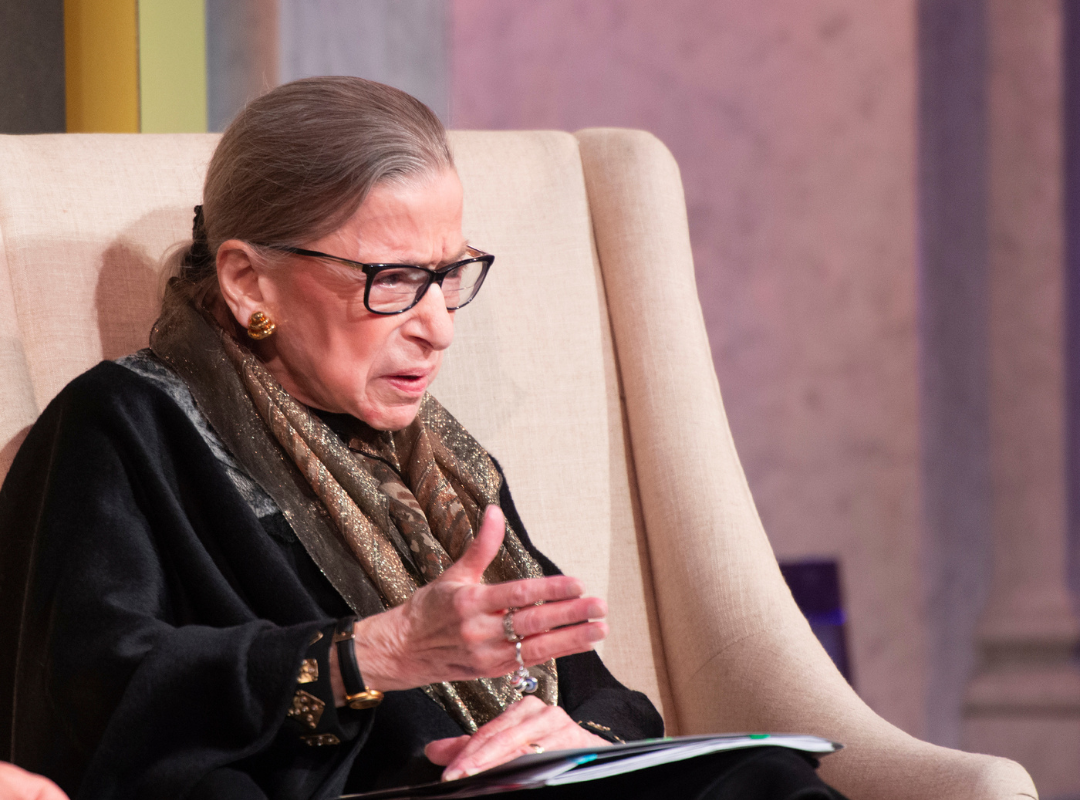Ruth Bader Ginsburg inspired women to break gender barriers, and after facing discrimination as she pursued her academic goals, she forged ahead to serve on the Supreme Court. She was the second woman and the first Jewish woman appointed to the Court. Her initials of “RBG” are synonymous with the advocacy she inspired.
Born in 1933 in Brooklyn, Ruth’s family valued education and instilled in her a love of learning. She graduated with a Bachelor’s degree in 1954 from Cornell University, where she earned high honors in government and distinction in all subjects. While there, she met and married her husband Marty, and they went on to have two children.
Educational Pursuits
After graduating from Cornell, she attended Harvard Law School where she was only one of nine women in a class of 500. She faced discrimination and she and other women were even excluded from using certain sections of the library.
For her final year, she transferred to Columbia Law School in 1958 and graduated at the top of her class in 1959. However, being a Jewish woman and mother made it difficult to find employment. But she was able to land a position as a law clerk for two years.
Over the next few years she went on to become a research associate for the Columbia Law School Project on International Procedure. Beginning In 1963 she worked as a Professor of Law at Rutgers University School of Law where she taught classes until 1972.
Forging the fight for change
While at Rutgers, Ruth learned she was pregnant with her second child, and out of fear of discriminatory employment practices, she wore baggy clothes until her contract was renewed. When she discovered that her salary was lower than that of her male colleagues, she joined an equal pay campaign with other women professors which resulted in substantial pay increases for all the complainants.
Over the next few years, she held various legal positions and became involved in the American Civil Liberties Union (ACLU), and was central to initiating their Women’s Rights Project in 1971. She returned to Columbia Law School in 1972 and became the first woman hired to receive tenure. In 1980, President Jimmy Carter appointed Ruth to the United States Court of Appeals for the District of Columbia Circuit Court, where she served for 13 years.
In 1993 President Bill Clinton nominated her as an Associate Justice of the Supreme Court and at 60 years old, she accepted his nomination. She took her seat as a Supreme Court Justice on August 10, 1993. In 2009, she worked with President Barack Obama on the Lilly Ledbetter Fair Pay Act to combat pay disparities.
Ruth Bader Ginsburg died from pancreatic cancer in September of 2020 leaving behind a legacy of advocacy for gender pay equality and women’s rights. Her tireless efforts continue to benefit marginalized communities to this day.
Her Nexx Chapter invites you to join our free community where women from around the world are connecting with each other’s stories, exploring different experiences, and transforming ideas.
The Future of Connection for Women








0 Comments